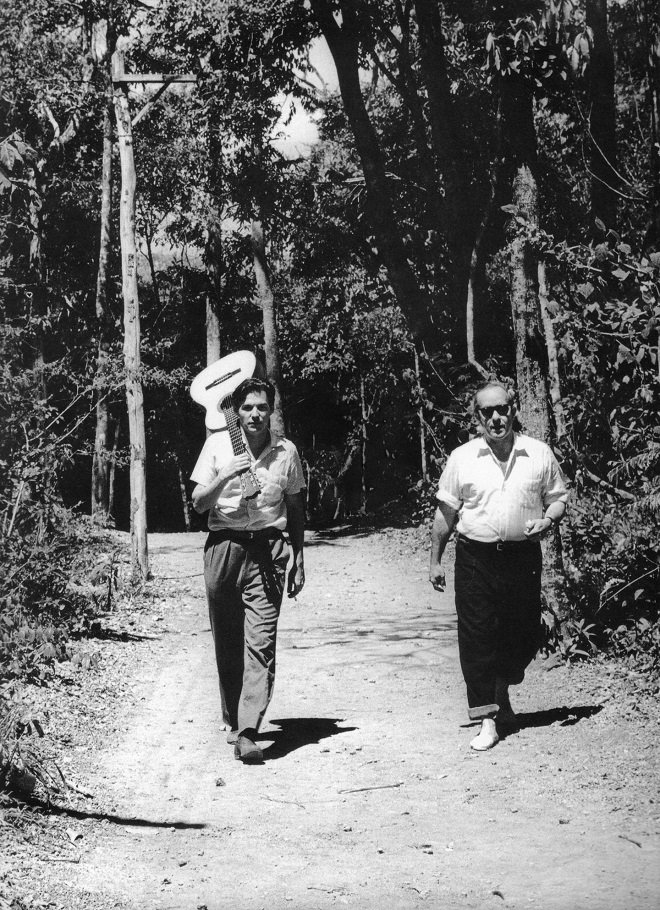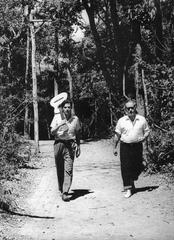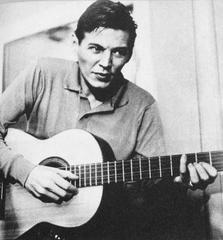
Comprehensive Guide to Visiting Orla Ipanema, Rio de Janeiro, Brazil
Date: 18/07/2024
Introduction
Orla Ipanema, located in the vibrant city of Rio de Janeiro, Brazil, stands as one of the most iconic and multifaceted beachfronts in the world. Renowned for its stunning natural beauty, rich cultural heritage, and dynamic social scene, Orla Ipanema has evolved from a sparsely populated region into a bustling hub that attracts millions of visitors annually. Its history, spanning over a century, is marked by significant urban development and cultural milestones, such as the construction of Avenida Vieira Souto and the global impact of the Bossa Nova music genre. The song “The Girl from Ipanema” by Antônio Carlos Jobim and Vinícius de Moraes, which gained international acclaim in the 1960s, further solidified the area’s cultural significance (Rio Times).
Visitors to Orla Ipanema are greeted with a seamless blend of urban sophistication and natural allure. The beachfront promenade, known as the “Calçadão,” features a distinctive wave-patterned mosaic pavement designed by the legendary Brazilian landscape architect Roberto Burle Marx. This promenade not only enhances the aesthetic appeal of the area but also reflects the fluidity and dynamism of Brazilian culture. Whether strolling along the beach, enjoying local culinary delights, or engaging in various sports activities, Orla Ipanema offers a unique and enriching experience for everyone. This comprehensive guide aims to provide you with all the essential information, including historical context, visitor tips, and travel advice, ensuring that your visit to Orla Ipanema is memorable and enjoyable.
Table of Contents
- Introduction
- History of Orla Ipanema
- Cultural and Historical Importance
- Architectural and Urban Significance
- Visitor Information
- Social and Recreational Hub
- Economic Impact
- Environmental Significance
- Sporting Significance
- Artistic and Creative Influence
- Community and Social Initiatives
- Gastronomic Significance
- Conclusion
- FAQ
History of Orla Ipanema
Early Development and Urbanization
Orla Ipanema, a prominent beachfront in Rio de Janeiro, Brazil, has a rich history that dates back to the early 20th century. The area was initially a sparsely populated region with sand dunes and a few scattered houses. Urbanization began in earnest in the 1900s with the expansion of Rio de Janeiro’s city limits and the development of infrastructure such as roads and public transportation. The construction of Avenida Vieira Souto, which runs parallel to the beach, was a significant milestone in the area’s development. This avenue facilitated easier access to the beach and attracted affluent residents, leading to the construction of luxurious homes and buildings (Rio Times).
The 1960s Cultural Boom
The 1960s marked a transformative period for Orla Ipanema, as it became a cultural hotspot. This era saw the rise of the Bossa Nova music genre, heavily influenced by the relaxed and vibrant atmosphere of Ipanema. The song “The Girl from Ipanema” by Antônio Carlos Jobim and Vinícius de Moraes brought global attention to the area, embedding it in the cultural fabric of Brazil and the world. The song’s legacy continues to attract music enthusiasts and tourists, eager to experience the place that inspired such an iconic tune.
Cultural and Historical Importance
Orla Ipanema gained international fame in the 1960s with the release of the song “The Girl from Ipanema.” This Bossa Nova classic brought global attention to the area, embedding it in the cultural fabric of Brazil and the world. The song’s legacy continues to attract music enthusiasts and tourists, eager to experience the place that inspired such an iconic tune.
Architectural and Urban Significance
The urban design of Orla Ipanema is a testament to the innovative spirit of Rio de Janeiro. The beach promenade, known as the “Calçadão,” features a distinctive wave-patterned mosaic pavement designed by Brazilian landscape architect Roberto Burle Marx. This design enhances the aesthetic appeal of the area and reflects the fluidity and dynamism of Brazilian culture. The promenade is a popular spot for walking, jogging, and cycling, offering both locals and tourists a scenic route along the coastline.
Visitor Information
Visiting Hours
Orla Ipanema is open to the public 24/7, allowing visitors to enjoy its beauty at any time of the day or night. However, the best time to visit is during daylight hours when the beach is most lively and safe.
Tickets
There is no entrance fee to access Orla Ipanema. The beach and its promenade are free for everyone to enjoy.
Travel Tips
- Best Time to Visit: The ideal time to visit is during the Brazilian summer, from December to March, when the weather is warm and conducive to beach activities.
- How to Get There: Orla Ipanema is easily accessible by public transportation, including buses and the metro. The closest metro station is General Osório.
- Nearby Attractions: Don’t miss nearby attractions like Copacabana Beach, the Christ the Redeemer statue, and the Sugarloaf Mountain.
- Accessibility: The promenade is wheelchair accessible, and there are several ramps and accessible restrooms available.
Social and Recreational Hub
Orla Ipanema serves as a social and recreational hub for both residents and visitors. The beach is divided into different sections, each catering to various groups and activities. For instance, Posto 9 is renowned for its vibrant social scene, attracting a diverse crowd, including artists, musicians, and LGBTQ+ communities. This inclusivity and diversity make Orla Ipanema a microcosm of Rio’s broader social landscape.
Economic Impact
The economic significance of Orla Ipanema cannot be overstated. The area is a major tourist attraction, contributing significantly to Rio de Janeiro’s economy. The influx of tourists supports local businesses, including hotels, restaurants, and shops. According to the Rio de Janeiro Tourism Company (Riotur), the city welcomed over 2 million international tourists in 2023, with a substantial number visiting Orla Ipanema (Riotur). This tourism influx generates employment opportunities and stimulates economic growth in the region.
Environmental Significance
Orla Ipanema is also significant from an environmental perspective. The beach is part of the larger coastal ecosystem of Rio de Janeiro, which includes the Tijuca National Park and the Rodrigo de Freitas Lagoon. Efforts to preserve the natural beauty and biodiversity of these areas are ongoing. The local government, in collaboration with environmental organizations, has implemented various initiatives to maintain the cleanliness and ecological balance of Orla Ipanema. These efforts include regular beach clean-ups and educational programs aimed at promoting sustainable tourism practices.
Sporting Significance
The beach is a hotspot for various sports activities, particularly beach volleyball and surfing. Orla Ipanema has hosted numerous national and international sporting events, enhancing its reputation as a premier sports destination. The beach’s consistent waves and favorable weather conditions make it an ideal location for surfing, attracting both amateur and professional surfers from around the world. Additionally, the beach volleyball courts are frequently used for local tournaments and recreational play, fostering a sense of community and healthy living.
Artistic and Creative Influence
Orla Ipanema has long been a source of inspiration for artists, writers, and filmmakers. The beach’s stunning natural beauty and vibrant atmosphere have been depicted in numerous works of art, literature, and cinema. Local artists often set up stalls along the promenade, showcasing their creations and adding to the area’s cultural richness. The beach has also been featured in several Brazilian films and international productions, further cementing its status as a cultural icon.
Community and Social Initiatives
The significance of Orla Ipanema extends to various community and social initiatives. Local organizations frequently use the beach as a venue for events promoting social causes, such as environmental conservation, public health, and cultural heritage. These initiatives raise awareness and foster a sense of community and collective responsibility among residents and visitors. For example, the “Praia Limpa” campaign, organized by local NGOs, involves volunteers in regular beach clean-up activities, emphasizing the importance of environmental stewardship (Praia Limpa).
Gastronomic Significance
The culinary scene around Orla Ipanema is another significant aspect. The area is home to various restaurants, bars, and food stalls offering a range of local and international cuisines. From traditional Brazilian dishes like feijoada and acarajé to contemporary fusion cuisine, the gastronomic offerings cater to diverse tastes and preferences. The beachside kiosks, known as “quiosques,” are particularly popular for their refreshing drinks and snacks, providing a perfect complement to a day at the beach.
Conclusion
Orla Ipanema is more than just a picturesque beach; it is a microcosm of Rio de Janeiro’s broader cultural, social, and economic landscape. From its early urbanization efforts in the 20th century to its rise as a cultural hotspot in the 1960s, Orla Ipanema has continually evolved, attracting both locals and tourists alike. Its historical and cultural significance is underscored by landmarks such as the wave-patterned Calçadão and the global influence of the Bossa Nova music genre. The area serves as a social and recreational hub, offering a variety of activities that cater to diverse interests—from beach volleyball and surfing to art exhibitions and culinary experiences. Moreover, the economic impact of tourism in Orla Ipanema is substantial, contributing significantly to the local economy and supporting a myriad of businesses. Efforts to preserve the area’s natural beauty and promote sustainable tourism practices further enhance its appeal.
In conclusion, a visit to Orla Ipanema is not just about enjoying a beautiful beach; it is an opportunity to immerse yourself in the vibrant culture, history, and community of Rio de Janeiro. Whether you’re exploring its historical landmarks, participating in local festivals, or simply relaxing by the sea, Orla Ipanema offers something for everyone. By following the travel tips and recommendations provided in this guide, you can ensure a safe, enjoyable, and enriching experience. For more information and updates on Orla Ipanema and other attractions in Rio de Janeiro, be sure to download the Audiala mobile app and follow us on social media.
FAQ
What are the visiting hours for Orla Ipanema?
Orla Ipanema is open 24/7, but the best time to visit is during daylight hours.
How much are tickets for Orla Ipanema?
There is no entrance fee; the beach and promenade are free for everyone.
What is the best way to get to Orla Ipanema?
The beach is easily accessible by public transportation, including buses and the metro. The closest metro station is General Osório.
Are there any nearby attractions?
Yes, nearby attractions include Copacabana Beach, Christ the Redeemer, and Sugarloaf Mountain.
Is Orla Ipanema accessible?
Yes, the promenade is wheelchair accessible, with several ramps and accessible restrooms available.































































